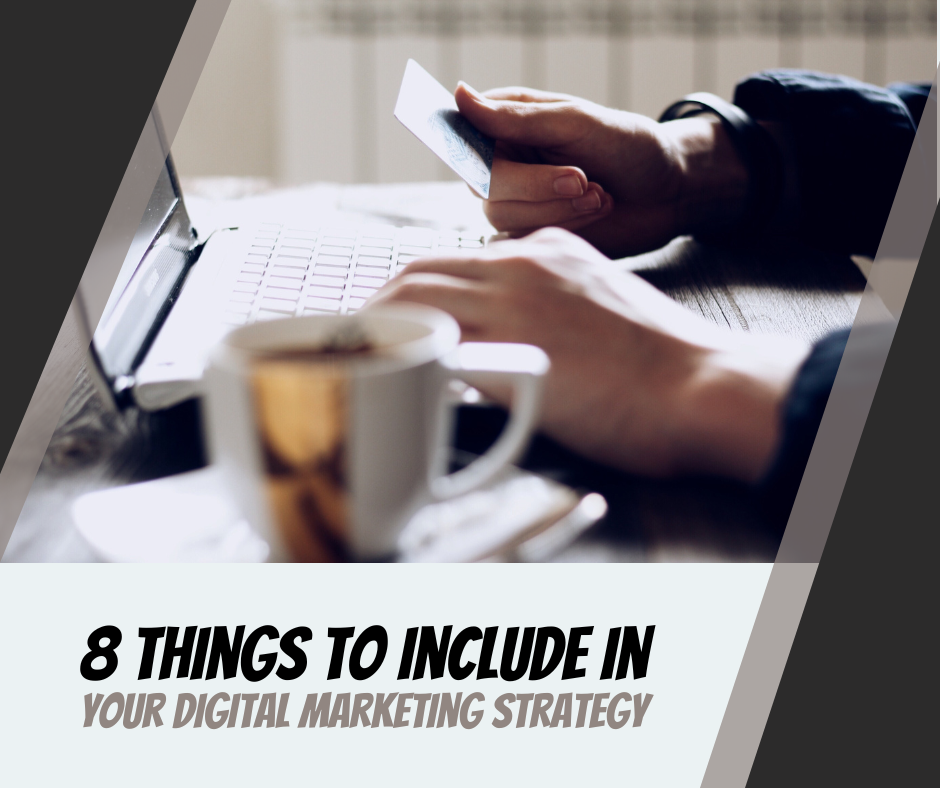Digital marketing is a constantly changing environment, and businesses need to work extra hard and adapt accordingly to stay on top of their game. You can’t be complacent with your business—having great products and services just isn’t enough anymore. You need to constantly strive to make the customer experience a little bit better, the customer’s journey a little bit faster, and shopping a little more fun.
Read down the list to find out our top eight digital marketing trends to hop on, stat!
1. Visual Search
Image search is a fairly new feature some search engines have started to offer. Rather than plugging keywords or questions, you can either upload or drop an image link into the search bar and find results that way.
It does this by using image recognition technology. Now, instead of racking your brains trying to remember the name of that one celebrity, you can put in their image and have the search engines tell you!
To optimize your images for image search, make sure to have alt texts, descriptive filenames, and sitemaps. Also, have high-quality images so they’re easily recognizable by the software.
2. Shoppable Posts
With billions of people using social media every day, e-commerce website owners had to adapt by letting their customers shop from their feeds. These days, it’s not uncommon to find Instagram photos or Facebook posts that advertise products while directly leading to the buying page.
When you’re creating a social media campaign, always make sure to lead customers to your website by including website links on your bio, tagging products and adding descriptions, and having a price tag on display, like the ones you see here:

3. Gamification
Everyone loves a good game or challenge. An awesome way to keep customers interacting with your brand is to incorporate games into your marketing strategy.
For example, Duolingo is a language-learning app that constantly encourages its users with reminders and challenges. As learning a language takes a lot of time and effort, Duolingo breaks them down into smaller, more achievable daily goals that keep users motivated and engaged. The more you use Duolingo, the more features you can unlock!
Another way to use gamification is by adding mystery elements. For example, if you sell figurines, you can rank them by tier from common, uncommon, rare, and very rare and sell them in a mystery box. Then, customers can take a fun gamble by buying multiple mystery boxes to get rare figurines!
4. Marketing Automation
The bigger your e-commerce website is, the harder it is to personally interact with your customers. It’s impossible to juggle running a business while dealing with planning proper marketing strategies, boosting visibility on social media, retaining customers, dealing with customer issues, collecting feedback, and so much more!
Marketing automation helps business owners by taking most of that load off of them. There are tons of free and paid tools out there that can help you run your business—you’ve got Podium for review management, Mailchimp for email marketing, Autopilot for lead generation, and Google Analytics for data gathering, for example!
5. Virtual Assistants and Chatbots
People don’t have the time these days to be stuck on hold for hours! When they want their issues fixed or just want to ask questions about their product or service, they expect an immediate response. That’s why many businesses have started offering chatbots or virtual assistants to help.
Chatbots and virtual assistants utilize artificial intelligence. They have a list of frequently asked questions and respond with an answer the customer is most likely to be satisfied with. With these systems in place, both businesses and customers can save a lot of time—businesses don’t have to deal with questions that can be easily Googled, while customers don’t have to wait a long time for a fix.
6. User-Generated Content
Customers love feeling involved in the business. They aren’t just limited to posting written reviews anymore—they can post photos on Instagram, upload videos on YouTube, write lengthy descriptions on Facebook, and even do related challenges on TikTok.
Businesses can capitalize on this by sharing user-generated content on their feeds, thereby encouraging customer feedback, garnering exposure, improving SEO, and diversifying content.
7. Content Marketing
Now, content marketing isn’t exactly revolutionary, but it’s withstood the test of time in the marketing world. It helps you look more relatable to your customers with engaging and persuasive content.
While there are numerous ways to have creative and entertaining content (e.g., videos, blog posts, pictures), the rules remain the same: always keep your target audience in mind, use the right tone and language, be mindful of controversial topics, never resort to fake or distorted information, and get on with the times.
8. Mobile Optimization
Over half of web searches today are done through mobile devices such as cellphones and tablets, so if your website isn’t already mobile-optimized, then get on cracking! You’re not going to make a very good impression with your customers if your website is far too clunky and hard to read on their mobile devices. Your customers would probably leave and find another store rather than stay on your e-commerce website any longer.
Thankfully, acquiring a mobile-friendly e-commerce web design is fairly simple and is something all website designers should know how to do.
